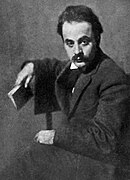Social and Societal Equivalents: Trapped individuals or groups in oppressive societal systems, such as slavery or systemic inequality, reflect the concept of air trapping. Solutions often require systemic changes, akin to addressing underlying airway obstructions.

Art: “The Scream” by Edvard Munch captures the concept of being trapped in an overwhelming emotion or state.

Sculpture: Auguste Rodin’s “The Thinker” evokes a sense of mental entrapment or deep introspection.

Music: “Bohemian Rhapsody” by Queen, particularly the lyrics “I’m just a poor boy, I need no sympathy,” reflects the feeling of being trapped by fate or circumstances.

Dance: Interpretive dance styles often explore the theme of entrapment, using restricted movement to symbolize struggle.

Ashley Davidoff Photography TheCommonVein.net dance-0077
Literature: Franz Kafka’s “The Metamorphosis” reflects being physically and emotionally trapped in an altered existence.

Quotes by Famous People:
“None are more hopelessly enslaved than those who falsely believe they are free.” – Johann Wolfgang von Goethe.

“We are all prisoners, but some of us are in cells with windows and some without.” – Khalil Gibran.

Poetry: Emily Dickinson’s poem “Hope is the thing with feathers” captures the contrast between entrapment and the resilience of hope.

Architecture: Labyrinthine structures, such as the Minotaur’s labyrinth in Greek mythology or modern-day prisons, embody the physical manifestation of being trapped.

